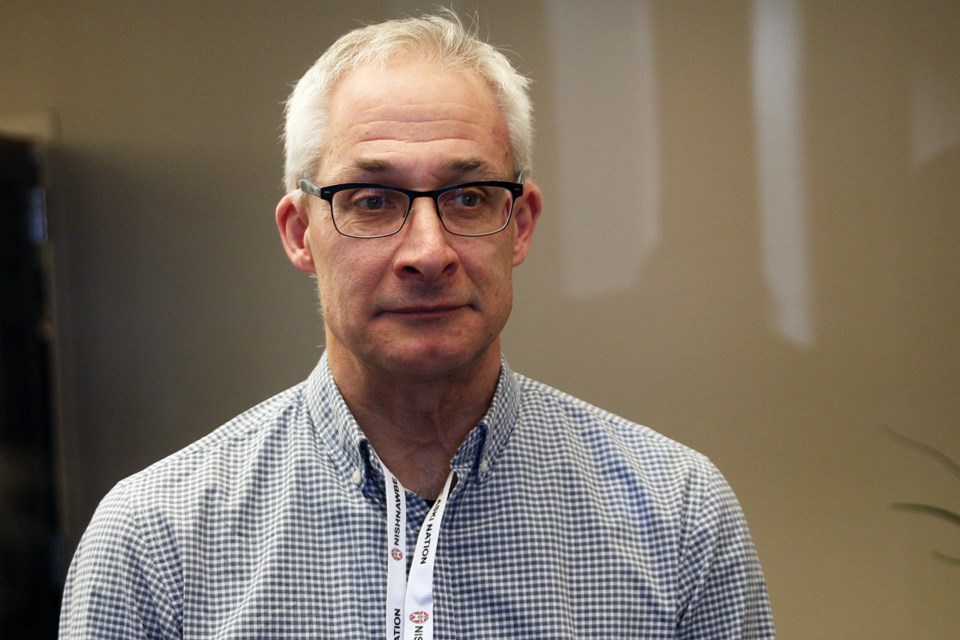THUNDER BAY – A coroner’s review of 11 children and youth in Ontario who have died while in the care of a children and family services agency is expected to be completed this summer.
Speaking to the Nishnawbe Aski Nation Chiefs-in-Assembly in Thunder Bay on Thursday, Ontario Chief Coroner Dr. Dirk Huyer provided an update on the review, which is being undertaken by a seven-member expert panel.
Huyer did not rule out the deaths being the subject of an inquest at a later date but said the review will produce findings more immediately.
“We can get things going much more quickly when it’s not an inquest setting,” Huyer said.
“This review is much more timely. It’s going, we’ve already started. We’re in the process of seizing all the records and getting those records to understand those youths deaths and the trajectory to their time.”
Across the province 11 youth died while in the care of a children’s aid society or Indigenous well-being organization between Jan. 1, 2014 and July 31, 2017. Seven of the deaths were determined to be suicides, one was a homicide and the means of three of the deaths are undetermined.
Huyer said all of the youth had a history of mental health challenges and in many cases were in group homes or foster homes to receive treatment or services that were not available in their home communities.
Of the 11, seven of those youth from Indigenous communities with six of them in Nishnawbe Aski Nation territory.
Four of the deaths of Nishnawbe Aski Nation youth occurred in an eight-month span between Oct. 2016 and last May, capped by the death of 17-year-old Tammy Keeash of North Caribou Lake whose body was found in the Neebing-McIntyre Floodway in Thunder Bay where she was living in a group home.
“The vast majority of them were placed outside of their home communities and many, many, many kilometres from their home. Hundreds of kilometres from their homes,” Huyer said. “Many were very isolated by the fact that there was very limited ability for communication with their home communities and their families.”
Mushkegowuk Tribal Council Grand Chief Jonathan Solomon questioned why there’s a different standard for the deaths of children in care than people who die in police custody or in jails, with those cases subjected to mandatory inquests.
“But when a child dies under government care, it’s not automatic,” Solomon said.
“There’s something wrong with that picture. It’s a matter of should we go ahead with an inquest or not. That’s the call of the coroner and I think that’s wrong. A child that’s under the care of the government should not be any different from other standards.”
Huyer said the coroner’s office is obligated to conduct an investigation whenever a child dies when a children or family services agency is involved, though that is not the same as an inquest.
As well, Huyer announced details of the Chief Coroner’s Table on Fire Safety, a collaboration including Indigenous leadership, the Ontario Office of the Fire Marshal and Emergency Management and involving Indigenous Services Canada to tackle fire deaths in the province’s Indigenous communities, where between 2007 and 2016 there were 34 fatal fires that killed 58 people.
“This is a tremendous number and very disproportionate compared to any fire deaths across Ontario,” Huyer said.
“We recognize again with that number of deaths we wouldn’t be able to proceed to an inquest in a very quick manner. It doesn’t mean we won’t do an inquest but we’re looking at a similar approach in trying to figure out trends, underlying and commonalities and a full understanding of the contributing factors that led to each of these fire deaths.”
Both reviews may produce recommendations, with those findings potentially identifying existing gaps and playing a role in informing initiatives that are in place or legislative changes.
"What I hope, what I'm striving for and the goal is we have as complete an understanding we can about what are the factors that occur and lead to these deaths," Huyer said. "What are areas where there are opportunities for prevention, opportunities for change and opportunities to reduce the chance of any fires occurring let alone any fire deaths."
